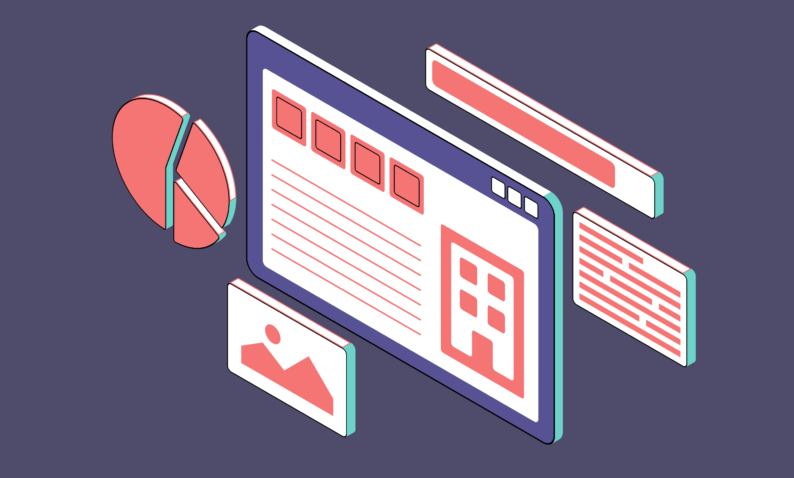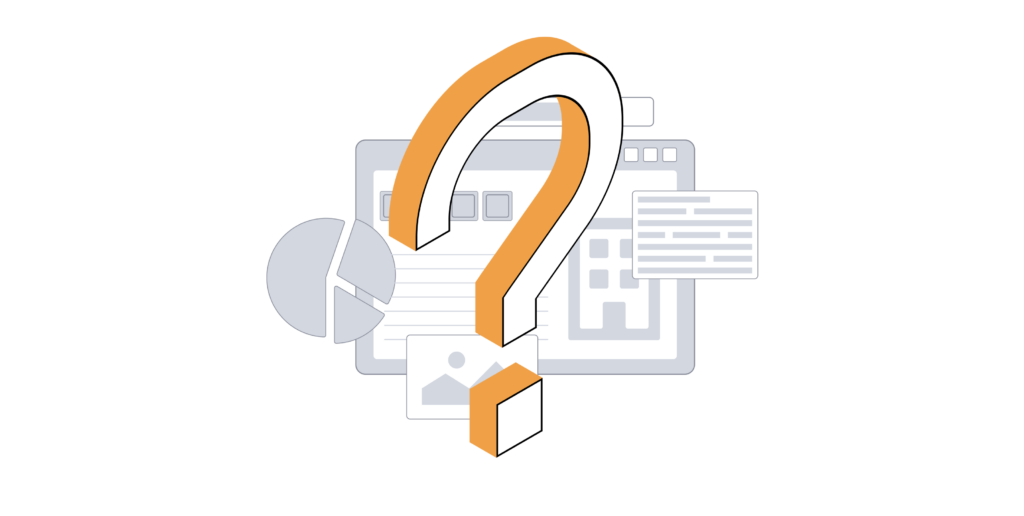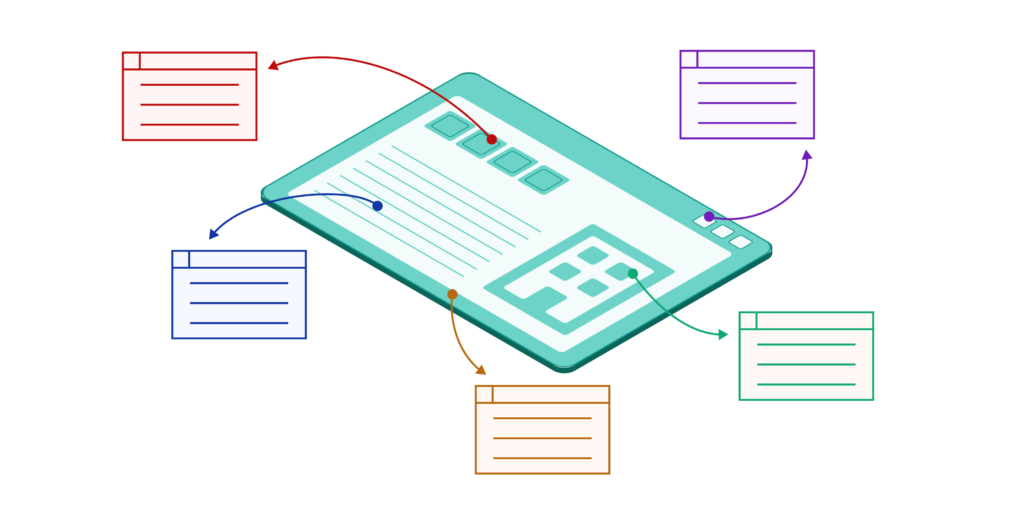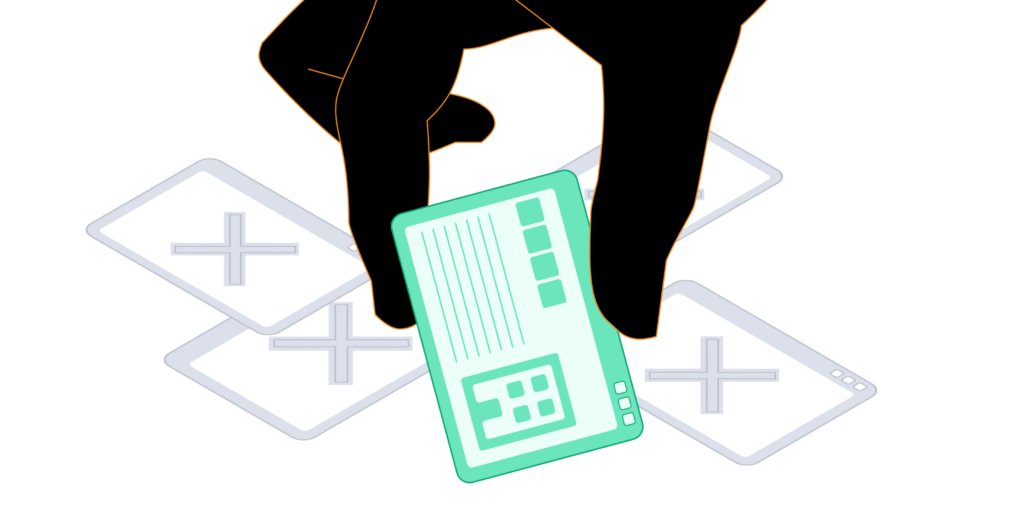
Get Started
Graphite's supplier management tool helps you onboard faster, cut time on risk reviews and streamline supplier validations. Save time and money.
March 5 2024
Choosing the Best Supplier Portals for Your Business: How to Pick and Which Features to Look for?
Interacting with suppliers can be time-consuming, costly, and sometimes even frustrating for many organizations. The best supplier portals, however, can take away all the pain by offering you a procurement solution tailor-made for streamlining essential business processes.
These innovative vendor management platforms are transforming the way enterprises interact with suppliers, making procurement processes more efficient and a lot less stressful. But before we explore how this digital tool can enhance efficiency and explain which features are common amongst the best supplier portals, let’s first define what a supplier or vendor portal is.
What Is a Supplier or Vendor Portal?

Simply put, a supplier portal, also known as a vendor portal, is an integrated online platform that enables businesses and suppliers to collaborate. Imagine a digital hub where you can collect supplier information, manage required documents, track the current status of multiple suppliers, and communicate with ease. From contracts to electronic purchase orders, vendor invoices, payments, and even electronic W9 tax forms – everything is collected and managed through this user-friendly web interface.
The best supplier portals allow information to flow freely but securely and transactions to be processed efficiently while nurturing supplier relationships. Supplier portals are indispensable for companies looking to maintain a competitive edge in today’s fast-paced business environment.
What Are the Benefits of Supplier Portals?

Now that you know what a vendor portal is, you need to decide whether it is right for your business. This means looking into the benefits of having the right supplier portal software. The right supplier portal can offer your organization plenty of benefits that can potentially transform your procurement processes, including:
- Streamlined communication: You no longer need to keep track of endless email threads and misplaced or lost paperwork. A supplier portal centralizes all communication, making it quick and easy for you and your suppliers to exchange information.
- Enhanced efficiency: With features like automation, real-time tracking, and risk alerts, supplier portals cut back on your administrative workload and manual work so you can focus on more strategic tasks.
- Improved supplier relationships: Supplier portals provide a clear and consistent channel for communication, which, in turn, fosters stronger, more collaborative relationships with your suppliers.
- Data-driven insights: By collectingand analyzing information on performance and procurement metrics, supplier portals offer you a clearer view of your suppliers, which leads to better decision-making.
- Cost-savings and risk reduction: Streamlining procurement processes leads to reduced operational costs, and improved oversight helps mitigate risks associated with supplier management.
More than just a technology solution, a supplier portal is a strategic asset in procurement that enables enterprise organizations to operate more effectively, build stronger supplier relationships, and make smarter, data-driven decisions.
The Best Supplier Portals Share These Features

User-Friendly Interface
To save time and reduce frustration for users, a supplier portal must be easy to use and navigate.
Here’s what to focus on:
- Ease of navigation: Time is a resource you can’t afford to waste. An effective supplier portal should offer straightforward navigation, enabling you and your team to find exactly what you need quickly and hassle-free.
- Intuitive design: A portal should be more than simply functional. Be sure that the layout, icons, and tools are arranged in a way that feels natural to the user, reducing the learning curve and encouraging user adoption.
Comprehensive Information & Document Management
To maintain efficient procurement operations, your supplier or vendor portal needs to include secure information and document management.
Here’s what to look for:
- Accurate and up-to-date supplier data: Reliable data is the cornerstone of any decision-making process. Your supplier portal should ensure that all supplier information is not just accessible, but also meticulously accurate and constantly updated. In Graphite’s self-service portal, suppliers input and manage their own information. Graphite validates all supplier banking info, tax ID, and other critical commercial data, freeing procurement teams to reclaim valuable time and focus on other projects.
- Centralized document management: Imagine having all of your essential documents in one place, organized, and easily accessible. Centralization is key to efficiency and reduces time spent searching for documents while increasing your overall productivity. Graphite’s supplier portal offers centralized and secure supplier document management to simplify contract management, as well as storage and retrieval of your purchase orders, invoices, and compliance documents.
Integration Capabilities
The true power of the best supplier portal software lies in its ability to integrate seamlessly with your other systems and processes. The right supplier portal creates a connected and efficient procurement environment that drives deeper productivity and strategic insights.
Look for these key aspects:
- Compatibility with existing procurement systems: Your supplier portal should be compatible with the existing systems you have in place. Compatibility ensures that you can take full advantage of your current technology investments while adopting new functions to create a more robust and comprehensive procurement ecosystem. Graphite Connect is built to integrate with any ERP, including NetSuite and Oracle, and can even help you build custom integrations.
- Seamless data flow between systems: An effective supplier portal should enable the seamless flow of data between your systems, reducing manual data entry, minimizing data entry errors, and ensuring that critical information is up-to-date across all platforms. This seamless flow of information enhances decision-making and operational efficiency. In Graphite, changes to supplier information flow seamlessly into your ERP and other critical systems to ensure you have the most accurate, up-to-date information when you need it.
Security, Compliance, & Data Protection
Effective security, compliance, and data protection are the backbone of reliable supplier portals, providing peace of mind and stability in your procurement operations.
Prioritize these features when looking for the ideal supplier portal:
- Robust security measures: Your portal should be fortified with strong security protocols to protect sensitive information from cyber threats. This includes encryption, multi-factor authentication, and regular security audits. Robust security measures within the Graphite platform ensure that your data and your suppliers’ data remain confidential and secure, safeguarding your operations against potential breaches. Graphite’s multi-factor authentication and automated controls and approvals help stop hackers and fraudulent vendors in their tracks.
- Adherence to industry standards and regulations: Your supplier portal must adhere to relevant industry standards and regulatory requirements. This ensures that all transactions and information handling within the portal are compliant with legal and ethical standards, minimizing the risk of penalties and damage to your company’s reputation. Graphite’s built-in automated risk assessment tools and third-party data integrations help to keep complex supply chains on track and moving smoothly.
Performance Analytics & Reporting
Having a clear, quantifiable understanding of supplier performance is critical. The best supplier portal software will allow you to incorporate performance analytics and reporting functionalities. This would, in turn, offer you actionable insights that drive smarter, data-driven procurement decisions.
A top-tier supplier portal should empower you with:
- Supplier performance metrics: Key to strategic supplier management, the portal should offer comprehensive metrics to assess supplier performance. Effective metrics include evaluating delivery times, quality of goods or services, compliance rates, and response times. You can easily manage and track supplier performance based on the criteria that matter most to you within the Graphite platform to make sure you’re getting the most value out of your investment. You can also track internal process efficiency and KPIs.
- Customizable reporting tools: A good supplier portal features customizable tools so you can tailor reports to your specific needs and objectives. Whether it’s drilling down into specific aspects of supplier performance or generating broad overviews, these tools should give you the flexibility to extract meaningful insights in a format that aligns with your strategic objectives.
Scalability & Flexibility
Supplier portals that are equipped to evolve and grow alongside your enterprise business are critical.
Seek a platform that offers you:
- The ability to accommodate growing business needs: As your enterprise expands, so do your procurement requirements. An effective supplier portal must be scalable. Seek a portal that can handle an expanding volume of transactions, accommodate multiple suppliers, and adapt to more complex supply chain management requirements without compromising performance or efficiency.
- Customization options for enterprise requirements: Every enterprise has unique challenges and needs. Superior vendor portals offer extensive customization options that allow you to tailor the features and functionalities to meet your specific business requirements. Graphite is fully customizable, giving you flexibility to design a intuitive user experience that fits your enterprise’s evolving needs, whether that’s adapting to workflows, integrating with specialized software solutions, or meeting specific reporting needs.
Supplier Onboarding & Relationship Management
For enterprise organizations, effective supplier relationship management begins with the onboarding process.
Well-designed vendor portals should facilitate this with:
- Streamlined onboarding process: The portal should simplify and accelerate the supplier onboarding process. This includes easy submission of necessary documentation, quick data verification procedures, and clear guidelines for new suppliers. Graphite’s portal offers a streamlined onboarding process, enabling you to reduce the time your suppliers spend on questionnaires by 70%.
- Tools for Managing Supplier Relationships: Beyond initial onboarding, the portal should provide supplier management tools for nurturing and maintaining those relationships, such as features for regular communication, performance feedback, collaborative planning, and problem resolution. Supplier tracking in Graphite’s central platform offers your team greater transparency into the current status of your projects, and ensures that all parties are aligned with each other’s expectations and objectives.
Communication & Collaboration Tools
The ability to communicate and collaborate effectively with your suppliers is crucial to driving productivity and success in your procurement endeavors.
An effective supplier portal should be equipped with:
- Real-time communication features: Look for a supplier portal that offers real-time communication like instant messaging, notifications, and updates. This ensures that you can quickly address queries, resolve issues, and share critical information to maintain a responsive procurement process. Graphite’s in-app communication enables procurement teams to communicate seamlessly with team members through direct messages, tasks, and reminders.
- Collaboration functionalities for joint projects: The portal should enable stakeholders to collaborate on projects with tools that allow shared access to documents and joint task management. These functionalities streamline project coordination and also foster a more integrated and cohesive working relationship with your suppliers.
How to Select the Ideal Supplier Portal Software for Your Business

Choosing the right supplier portal software is a critical for enterprise businesses. The best supplier portal software not only streamlines operations but also aligns with your strategic business objectives.
Use this step-by-step guide to help you make the best choice:
1. Assess Your Business Needs
Begin by evaluating the specific requirements of your business. Consider factors like the size of your supplier network, the complexity of your supply chain, and your procurement processes. Understanding these needs will help you pinpoint the features you need in a supplier portal.
2. Prioritize Key Features
Based on your needs assessment, prioritize features such as user-friendliness, integration capabilities, scalability, security, and information management. Also, consider your need for specific functionalities like real-time communication, collaboration tools, performance analytics, and supplier relationship management. Develop a checklist to identify the essential features of a supplier portal that works with your company budget.
3. Research and Compare Options
With your criteria in mind, research various supplier portal options available in the market. Compare them based on the features they offer, scalability, cost, user reviews and ratings, and the level of customer support provided.
4. Evaluate Integration Capabilities
It’s crucial that the supplier portal integrates seamlessly with your existing procurement systems. This integration is key to maintaining a streamlined workflow and ensuring data consistency across platforms.
5. Consider Security & Compliance
Ensure that the portal adheres to industry-standard security and compliance requirements. A secure and compliant portal will protect your sensitive data and help avoid legal and financial risks.
6. Look for Customization & Flexibility
The ability to customize the portal to fit your specific business process and requirements is vital. Flexibility in adapting to changing business needs is also a key consideration.
7. Request Technology Demos & Trials
Before making a final decision, request demos or trial periods. This allows you to test the portal in a real-world scenario, ensuring it meets your expectations and integrates well with your existing systems.
8. Solicit Feedback from Users
If possible, get feedback from other users, especially those in similar industries. Their insights can provide valuable information on portal performance and reliability.
9. Conduct a Cost-Benefit Analysis
Finally, weigh the costs of the portal against the benefits it offers. The best supplier portal is one that provides a high return on investment, improving efficiency and contributing to the overall success of your procurement operations.
By following these steps, you can select the supplier portal that not only meets your current needs but also supports the growth of your business in the long term.
Unlock Enhanced Efficiency with the Best Supplier Portal Software on the Market: Graphite
Graphite’s supplier portal not only streamlines the entire procurement process, it can enhance your supplier relationships through improved communication and greater efficiency across your supply chain. Our centralized hub will help you manage all supplier information, submitted documents, and communication, improving accuracy and significantly reducing your manual workload. In addition, our supplier portal’s robust integration capabilities seamlessly integrate with your existing systems to create a more cohesive technology ecosystem.
See Graphite Firsthand.
Request a demo to learn how our supplier portal can revolutionize your supplier and supply chain management.
Contact us